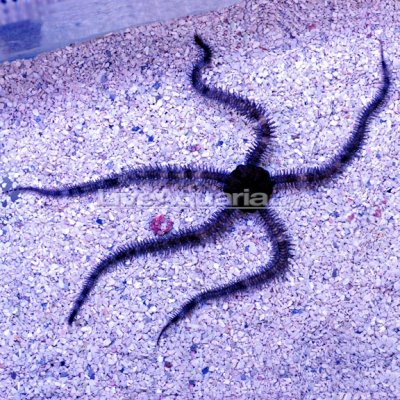- Joined
- Nov 5, 2016
- Messages
- 1,938
- Reaction score
- 1,901
I have to say that I HIGHLY doubt it burned through the fauna and starved. Possibly it was unhealthy and by the time it got to my tank it was already on the way out and it had no energy left to hunt for food... Possibly the depth of my sandbed was an issue. This tank is crawling with critters. As I was looking at him not moving I could physically see pods crawling on the sand near him and the rocks. There is a bit of algae possibly cyano on the sand etc.... The weird thing is it seemed that he went to the only spot where the fish had removed the sand (they seem to clear the sand in this spot because they go in and out of the rock crevasse constantly and it moves the sand) the tank has probably 1.5" to 2.5" of sand in some spots so maybe that accounts for the issue. I have a few nasso snails but they seem to do a crap job of stirring the sand. I see bubbles and algae build up on the sand bed and it doesnt seem to ever get stirred. Maybe I need more of them. They are alive I see them surface when I feed.
From LFS (through drip acclimation and temperature acclimation) to being set on the sand in my tank probably 2 hours maybe a bit longer but not more than 3 hours. The tank it came from had several of these stars and is probably a 40gallon breeder. Has tons of snails crabs and some nems and a shallow sandbed probably 1.5" at max. This lfs keeps them in a invert type tank with just a bunch of their cleanup crew and a few nems so its possible that there was nothing for it to eat and the stress of the transfer caused it to kick the bucket. Good question on how long at the shop I havent the faintest idea on that one. Several other sifters for sure in the same tank.
Again though I have to insist that there is no way it cleaned out the fauna in my tank. I do feed fairly heavily but I didnt attempt to feed the star, would have had I thought it was necessary.
If you'd like to see possibly you can in my youtube video the sandbed. I wouldnt say its too shallow.
Its too bad that it didnt make it I hate being the cause of somethings demise in my tank thats mainly why I'm trying to learn why. I would like something that would sift the sand well and currently dont have a top on my tank so a jawfish probably wouldnt work for now. Guess I'll add some more sand sifting snails.
Heres the video I mentioned if you want to see. Even from the video's thumbnail you can tell its not super shallow...
I do appreciate the comments and everyone's help.
Very interesting. I guess I should've done some research on your tank, because it is nothing what I expected. Plenty of space, plenty of sand. You may have honestly just gotten a star that was already on its way out! You may want to try another star, or if you're looking for sand stirring snail, a fighting conch is a good way to go (though I did lose one to my stupid hermit crabs


















